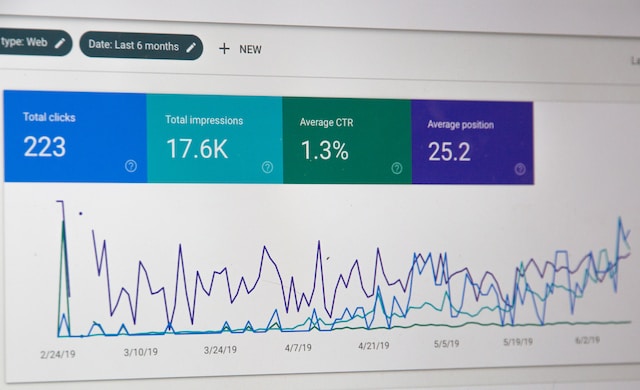Ever wondered how you can harness the power of “social media for therapists” to reach more clients and expand your professional network?
As the digital landscape continues to evolve, therapists can seize the opportunity to showcase their expertise, build trust, and foster deeper connections with potential clients. In this guide, we will explore the ultimate strategies for therapists to enhance their online presence and make an impact in the mental health community.
Key Takeaways
- Social media can be a powerful marketing tool for therapists to reach potential clients and showcase their expertise.
- Establishing an effective social media presence requires research, optimization of profiles, and maintaining professional boundaries.
- Paid advertising strategies must be managed effectively while adhering to ethical guidelines and HIPAA regulations.
The Power of Social Media for Therapists

At some point, your therapy clients will check your social media channels while building trust with you
A robust social media presence can work wonders for therapists looking to grow their practice and reach a wider audience. Social media marketing offers the opportunity to connect with potential clients, demonstrate expertise, and foster trust. In addition to a website, a social media page allows therapists to establish a more personal relationship with prospective clients, showcasing their personalities and sharing helpful resources.
Setting clear objectives before initiating a social media strategy is necessary for formulating an effective plan. By providing valuable content and engaging with other users on various platforms, therapists can successfully reach out to potential clients and raise awareness about their therapy services.
Establishing Your Professional Social Media Presence
We recommend claiming your brand name on as many social media platforms as possible. Even if you don’t plan to post there, fill out the bio, website link, and profile picture so that if someone searches for you, they’ll find you there. You can add an introductory post that says, “I’m not active on this platform, but let’s connect on facebook,” for instance.
The other thing is that it will stop someone else from claiming your practice or personal name and impersonating you. The damage to your reputation from someone impersonating you can leave bad impression for a potential client, especially if that client doesn’t realize that social media account doesn’t genuinely belong to you.

Setup accounts on social media platforms for your therapy practice
Establishing a professional social media presence involves carefully selecting platforms, optimizing profiles, and maintaining professional boundaries to protect personal information and client confidentiality. An effective selection of platforms for your therapy business involves researching platforms, considering the target audience, and evaluating platform features to create an optimized social media account.
When optimizing profiles, therapists should be mindful of their target audience, the type of content they will be sharing, and the overall aesthetic of their private practice profile. Also, respecting professional boundaries is key for therapists to ensure their content remains professional, refrain from expressing personal views on sensitive topics, and avoid revealing client information without explicit consent.
Choosing the Right Platforms
Choosing a suitable social media platform is key for therapists aiming to meet their goals, like connecting with other professionals or finding potential clients. Therapists can choose from various platforms like:
- Specialized platforms for specific approaches
The choice of platform depends on your target audience and therapy business objectives.
For instance, social media channels can be employed for different purposes on various social media platforms:
- LinkedIn can be used to build professional credibility and create professional associations
- Facebook may be more suitable for sharing posts, blogs, or utilizing paid advertising
- Twitter (now called X) may be a more advantageous option for therapists wishing to network with other mental health professionals
Optimizing Your Profiles

Create a memorable first impression on your therapy social media pages with a current headshot, a link to your therapy website, and complete descriptions.
Optimizing social media profiles involves creating a professional image, using relevant keywords, and linking to your website or blog. This enhances your online presence and drives traffic to your therapy services. Maintaining a professional image necessitates accuracy and a clear separation between personal and professional use.
When posting articles or blog posts on social media, therapists should:
- Include descriptive, keyword-rich captions and headings to improve their search engine rankings
- Use relevant keywords people are searching to increase the likelihood of their content being shared by others
- Attract potential clients by giving a way of taking a next step with a website link or a comment
- Grow their private therapy practice by referring clients back to their website.
Maintaining Professional Boundaries
Privacy settings are instrumental in maintaining professional boundaries and protecting therapists and their reputations from possible issues. By reviewing the privacy settings and filters available on social media platforms, therapists can ensure their profiles are adequately secured.
Take precautionary measures to avoid violating legal or ethical standards on social media by being mindful and researching laws and regulations in your area. Some essential strategies to maintain professional boundaries include:
- Creating social media policies for your team and draw clear boundaries for yourself
- Refraining from discussing confidential information, even with the clients themselves in a private message
- Exercising caution in terms of self-disclosure. Be authentic but not unprofessionally candid.
- Educating clients on personal privacy. Know when you need to ask a client to bring their comments to a private session rather than leaving them out publicly.
By following these strategies, therapists can ensure that they maintain professional boundaries on social media.
Content Creation for Therapists on Social Media

Create memorable and unique content for your therapy practice’s social media channels
For therapists, crafting engaging and informative content on social media is key to showcasing their expertise and promoting mental health awareness. By sharing articles, infographics, or videos that explore various mental health issues, self-care advice, or coping techniques, therapists can interact with their followers and provide valuable insights.
Consistent social media posts are key as they allow users to recognize and engage with your content. Adhering to a suitable posting schedule and utilizing scheduling or automation tools can help ensure regular and engaging content for your audience.
Types of Content
Therapists can share various content on social media, including articles, infographics, videos, self-care tips, coping strategies, and professional accomplishments. Sharing your blog posts on social media can help establish rapport and trust with potential clients, raise mental health consciousness in your community, diminish stigma, create discussion, and disseminate beneficial information.
Infographics can be used to provide educational resources, branding, and promotion, and data visualization. Meanwhile, sharing videos that offer useful information and draw in viewers can be highly effective for therapists on social media outlets because it helps viewers connect with you personally.
Consistency and Scheduling
A consistent schedule ensures that your social media content reaches your intended audience and promotes engagement. Generally, therapists are advised to post 1-2 times daily on Facebook and Instagram and 3-5 times daily on Twitter, but consistency is better than quantity.
If you can only commit to once a day, that’s better than 5 times one day and nothing for the rest of the week.
To ensure consistency in social media postings, therapists can follow a schedule that works best for them and use social media management software like Buffer or Hootsuite. This helps maintain a professional image and keeps your content up-to-date and relevant for your audience.
Repurposing and Recycling Content
Repurposing and recycling content on social media can help maximize its lifespan and reach a broader audience. By transforming existing content into new formats, such as turning blog posts into infographics or videos, therapists can present their valuable insights freshly and engagingly.
To recycle content, therapists can:
- Repurpose and repost existing blog posts, guides, and downloadable resources into video. Since you’ve already written the blog post (for example), it can then be the script you read in your video.
- Draw inspiration from questions and comments in Facebook groups
- Utilize online design and publishing tools like Canva to create visually appealing content from existing material, further expanding its reach and impact.
Navigating Ethical Concerns in Social Media Use
Addressing ethical concerns for therapists using social media entails maintaining client confidentiality, honoring privacy, and following professional conduct guidelines. Therapists must be mindful of these potential pitfalls and abide by ethical standards to maintain their professional image and protect their clients’ well-being.
Confidentiality and Privacy
Upholding client confidentiality and privacy on social media is fundamental to a therapist’s ethical responsibilities. By following these guidelines, therapists can uphold their duty to protect client confidentiality:
- Avoid sharing personally identifiable information (PII) or protected health information (PHI) on social media even in privates messages with clients themselves.
- Adhere to local regulations and guidelines when using social media platforms.
- Utilize privacy settings and filters to control who can access and view your social media content.
Privacy settings on social media platforms allow therapists to control who has access to their content and limit the visibility of sensitive information. Adjusting these settings ensures that only trusted individuals can access posts, photos, and personal information, further protecting client confidentiality.
Professional Conduct
Maintaining professional conduct on social media is a key aspect of a therapist’s online presence. Being mindful of what you post, ensuring accuracy, and professionally interacting with clients and colleagues can help maintain your professional image and build trust with your audience.
Adhering to ethical guidelines established by professional organizations such as the American Psychological Association (APA) or the National Association of Social Workers (NASW) is vital when running social media advertisements or engaging in online interactions. This ensures that your online conduct aligns with the values and principles of your profession.
Networking and Collaboration Opportunities

Network with other therapists to grow and learn together what is working as a social media strategy
Therapists can use their social media as a platform to:
- Network and collaborate with other mental health professionals, expanding their knowledge base and leading to opportunities for client acquisition and referrals
- Engage with peers and share valuable content, establishing themselves as experts in their field
- Foster professional connections
Platforms like LinkedIn and Twitter can be leveraged to build and maintain professional relationships with peers met at workshops and conferences. Including your Twitter handle in your professional bio when speaking at a conference or workshop can increase your followers and establish your credibility.
Measuring Your Social Media Success

Know your analytics to figure out what is working and can be improved in your social media marketing
To gauge the success of your social media efforts, you should:
- Set clear and measurable goals
- Use the built-in analytics provided by platforms like Facebook, Instagram, and Twitter
- Consider using third-party tools to monitor engagement, reach, and conversions (the number of people who click through to your website and become clients – converting them from visitors to paying clients).
Regularly reviewing your social media analytics can provide valuable insights into the content that resonates with your audience.
Track website traffic and conversion from your social media campaigns to optimize your efforts better. Google Analytics is a useful tool for this. By monitoring key metrics and assessing the performance of your content, you can make informed decisions to improve your online presence and attract more clients.
Paid Advertising Strategies for Therapists

Facebook ads can help you reached your untapped social media audience
While paid advertising strategies can help therapists reach a larger audience and target specific demographics, they require effective management, budgeting, and optimization to ensure a good return on investment. This is why we offer this service for our caregiver website clients here on our rates page. By investing in paid advertising on platforms like Facebook, therapists can enhance online visibility and connect with their ideal clients.
Therapists must comply with ethical guidelines and HIPAA regulations when creating advertising content. By ensuring that their ads comply with professional standards, therapists can confidently promote their services while maintaining their professional image and upholding their ethical responsibilities.
Summary
In summary, social media offers therapists a powerful tool to expand their reach, engage with potential clients, and showcase their expertise. By choosing the right platforms, optimizing profiles, creating engaging content, and navigating ethical concerns, therapists can effectively leverage social media to grow their practice and positively impact the mental health community. Embrace the power of social media and take your therapy business to new heights!
Frequently Asked Questions
What social media platforms do therapists use?
Given their wide user base and diverse demographics, therapists typically use Facebook and Instagram to connect with potential clients.
Should therapists have social media?
Having a presence on social media can help therapists reach new clients and connect with peers and industry leaders. While there are potential ethical concerns, the benefits of social media for therapists outweigh the risks if approached with caution and care.
What is the most recommended practice for therapists using social media?
The most recommended practice for therapists using social media is establishing clear boundaries and avoiding inappropriate relationships by separating personal and professional social media.
Should a therapist have an Instagram account?
Having an Instagram account can be an effective way to market yourself as a therapist, provide information about how to grow your business, and follow the accounts of other therapists. It’s worth considering for those looking to increase their reach.
What are the benefits of social media for therapists?
Social media allows therapists to increase their client base, build trust with potential clients, demonstrate their expertise, and expand their professional networks.
You might also like this article: Do I need a website for my therapy practice?
